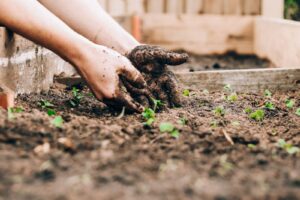March 31, 2022
Garden Journaling: Your Key Spring Planning Tool
Garden Journaling: Your Key Spring Planning Tool
A garden journal is just what it sounds like: a record of information about your garden. These might be lessons you’ve gleaned from past seasons, a layout of your crops, a record of your plant food applications and waterings, or any combination of tidbits that you want to remember.
Thinking about creating a record-keeping system for your gardening season but don’t know where to start? You’ve come to the right place!
 Create Your Own Garden Journal
Create Your Own Garden Journal
If you find it stressful to start from a blank page, you can find numerous templates for your garden journal online.
Search for your favorite free printable garden journal template here, or find a prepared journal in a local garden store, bookstore, or online.
There are a plethora of garden-tracking apps for your smartphone and online templates, too. But just like we like to get our hands in the soil, we prefer the feel of a pen and paper.
If you’re motivated to start a garden journal from scratch, all you need is a simple notebook to get started! Make sure the pages are big enough to record what you need and that your notebook is sturdy enough to withstand lots of use — and some outdoor time.
Some gardeners prefer a three-ring binder with loose-leaf paper, which allows you to keep growing your journal as long as you want — and allows you to add other elements like printed pages, seed packets, and more.
What you choose to create is up to you. One thing’s for sure: your garden journal can become a place that brings you joy and inspiration, just like your garden.

What Should I Record In My Garden Journal?
Keep in mind that your garden journal is as unique as your garden. What you choose to record is up to you, and might change over time.
There are a few must-haves for garden journal info:
- Garden layout
- Planting/sowing dates and techniques
- Fertilizing schedules and results
- Watering schedules
- Plant health
- Pest problems
- Rainfall
- Other weather changes
- Harvest yield
- Successful or unsuccessful plants and varieties
If you’re ready to look at more advanced garden information you might add:
- Bloom and harvest info and dates
- Pruning and deadheading timelines
- Netting, staking, and other garden infrastructure
- Crop rotations
- First dates (first and last)
- Sun exposure
- Favorite (and not-so-favorite) products
- Expenses
- Soil health info (Check out our guide to soil testing for a deep look at what it can tell you about your garden.)
Make your garden journal a creative space by adding:
- Photos
- Sketches
- Seed packets and tags
- Inspirational clippings from magazines to envision your dream garden!

Why Keep A Garden Journal?
Of course, there is an obvious answer: to keep a record of what worked and what needs adaptation to grow the most vibrant, prolific garden you can get. As with any hobby, habit, or practice, keeping track of our experiments and experience in the garden helps us keep improving. It makes us more efficient as we learn to see patterns, making changes with each new season.
Plus, there’s something about tracking your daily life with the plants, soil, water, and sun that just feels good.
What do you most want to get out of your garden journal?
Are you looking to increase your harvest? Improve soil health? Simply learn about your property, climate, and plants? Start there to figure out what you want to record and how to lay out your journal.
You might already know that routine improves your life — perhaps you have a bedtime routine that helps soothe your nervous system and lets you really feel like your day is winding down or, conversely, a morning routine that kicks you into gear.
Keeping a garden journal can be just like that: a daily or weekly routine that gets us in touch with changing seasons, our connection to the land, and the reciprocal relationship between humans and soil.

Show us your True Organic Plants
#GrowWithTrue
www.trueorganic.earth

 Create Your Own Garden Journal
Create Your Own Garden Journal